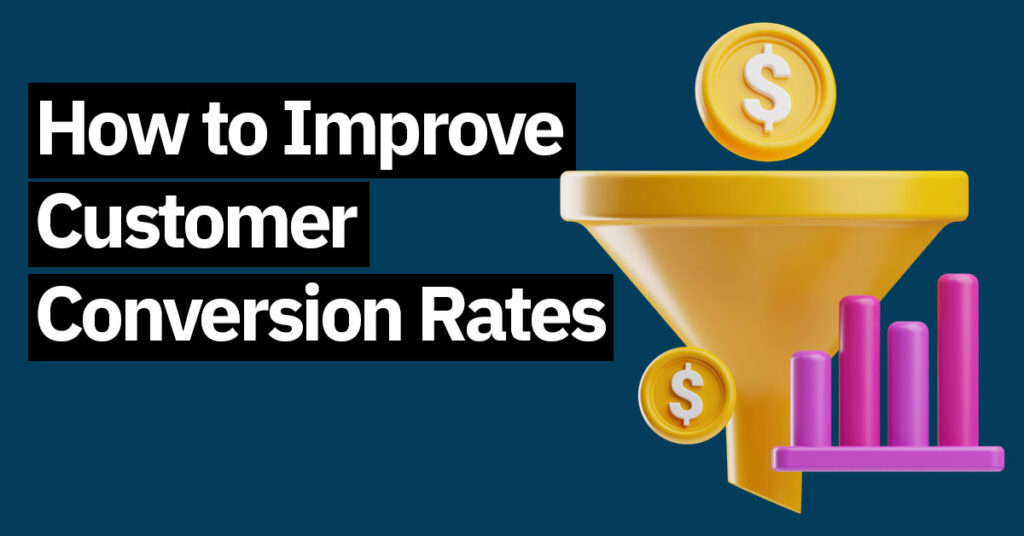
How to Improve Customer Conversion Rates
Successful sellers will map out and consider the path that a consumer takes in order to become an actual customer. This analysis is essential in order to identify the decision points at which a consumer might be most likely to abandon the path to a sale. Figuring out how to improve customer conversion rates is an on-going and ever-evolving process when it comes to funneling your audience efficiently.
The first step for any customer conversion is awareness of your brand. Sellers should always consider ways to maximize consumer awareness. Social media sites can provide great opportunities to advertise, as can buying sponsored ads on popular search sites such as Google.
Once a consumer becomes aware of your brand, he or she can begin to consider whether the product compares favorably to other available options. It can be helpful to identify any special distinctives or unique characteristics of your products, which distinguish them from alternatives, and then to emphasize the value of those unique attributes.
Of course, high-quality photos and clear, informative descriptions are key at this phase. Consider creating a short video highlighting the features of the product. Sometimes you may be more successful in marketing your product toward a smaller, specific group of consumers, who might be more inclined to appreciate its unique features, than you would be in using broad, more general marketing.
High brand credibility can boost a consumer’s view of your product in comparison to competitors. Brand credibility can be enhanced through positive reviews and testimonials. This is why collecting positive customer feedback is so important.
Credibility can likewise be enhanced by highlighting any positive business partnerships that you enjoy, such as with established payment processors. Getting your brand recognized by a business rating organization can help as well, especially if you are able to display a corresponding badge or seal on your site. The simplest and perhaps cheapest way to generate some credibility is to display a simply purchase tracker to show how many items have been purchased previously, presumably by satisfied customers.
Once the consumer has considered your product in comparison to alternatives, he or she will face the decision stage. At this point, a seller should consider ways to enhance the perception of product scarcity and/or sale urgency. Urgency can be generated through offering a limited-time discount code, a temporary sale, highlighting inventory limitations, and other tactics. Scarcity can be reflected through the display of the number of items left in stock.
Even after a decision to purchase has been made, a negative checkout experience can derail a sale right at the moment of truth. To avoid this, consider offering more than one payment processing avenue. Buyers have their preferred payment methods, with which they have become comfortable, and offering one of those methods can go a long way to finalizing a positive purchase decision. The same is true for shipping options. It is critical at this stage to ensure that unexpected fees or costs do not appear. Therefore, be as transparent as possible about any shipping or any other fees that will be assessed upon purchase.
Finally, sellers should consider and attempt to leverage customer post-purchase evaluation data. The post-purchase evaluation occurs when a customer has received the product, used it, and has formed opinions about the experience and product. It is critical to remember that your customer will be evaluating not only the product purchased, but also the purchase experience. Sellers should always strive to create and maintain lasting customer relationships, because it is generally easier to reconvert a past, happy customer than it is to convert someone who has no experience with your store.
Post-purchase evaluation includes not only the ordering experience, but fulfillment as well. Don’t make the mistake of investing in a customer conversion, only to lose all the value through a poor fulfillment experience. Remember that any post-sale evaluation is subject to improvement or deterioration based on subsequent customer support requests and responses that may follow the sale. The post-purchase evaluation stage is also when a customer starts thinking about whether they will become a repeat customer, either for the same item or another that you offer.
In considering all these stages of the conversion experience, make sure that your messaging is consistent. Pay attention to and eliminate any occasions for customer confusion. Also, ensure there are no unnecessary steps that a customer must undertake in order to complete a purchase. It is easy to add additional information-gathering steps in an effort to collect data, but don’t forget that every additional step is another point at which a consumer may abandon the conversion path.
Even if you think you are employing all the best practices, without a way to measure your success, your ability to refine the consumer experience will be significantly diluted. That is why many experienced sellers employ trackers to measure conversion rate and bounce rate. Learn about A/B testing and track the impact of incremental changes you make to your consumer experience.
For those who are already tracking these key metrics, consumer experience can be further analyzed through the use of click-trackers and heat maps. These can allow you to see where on your site consumers are spending the most and least time, and can be helpful, indirect indicators of consumer confusion. With such tools in place, you can make individual changes and track their impact, rather than changing everything at once and hoping for the best.
